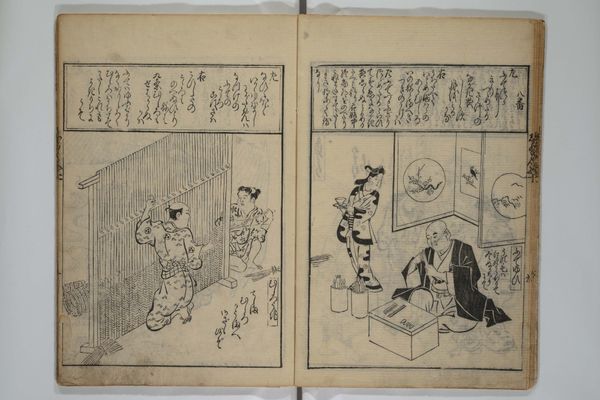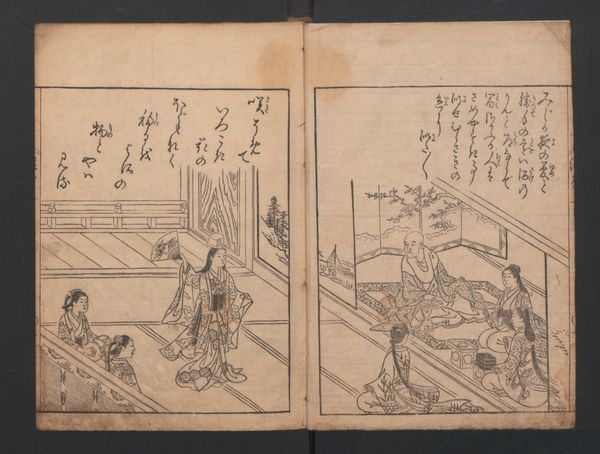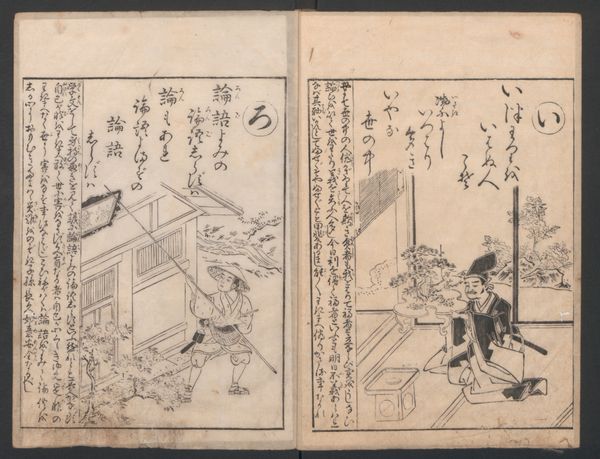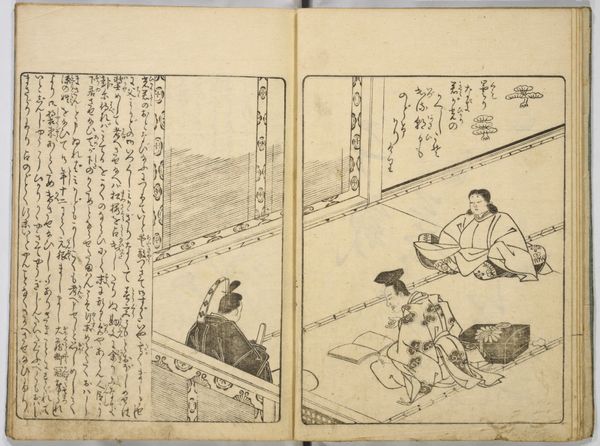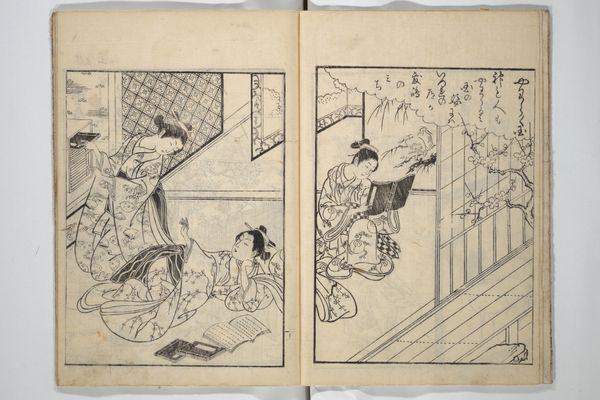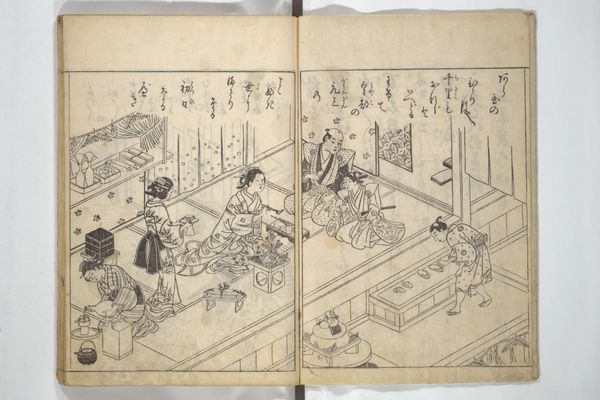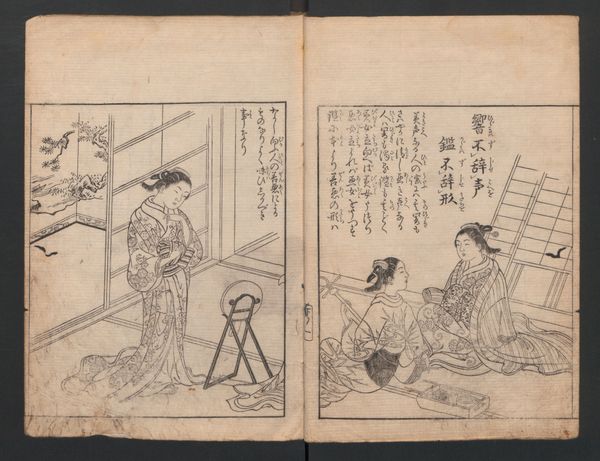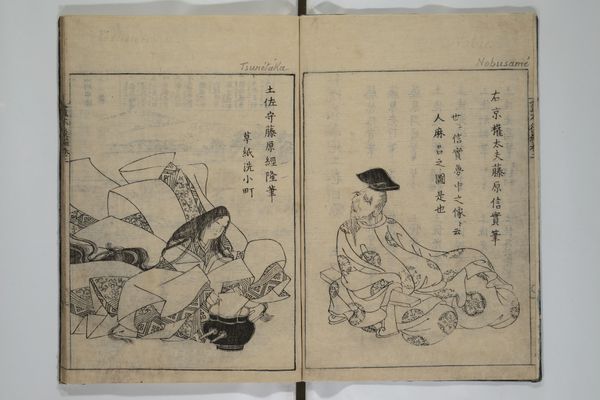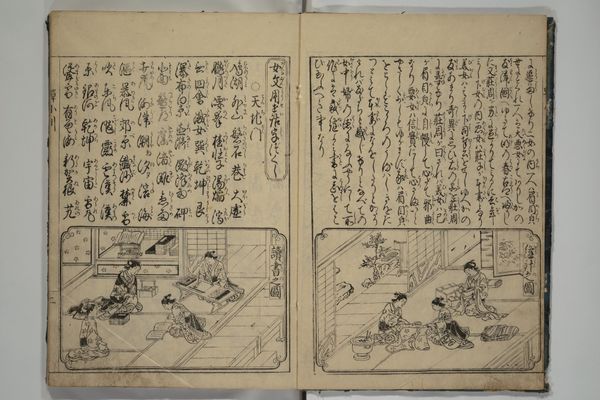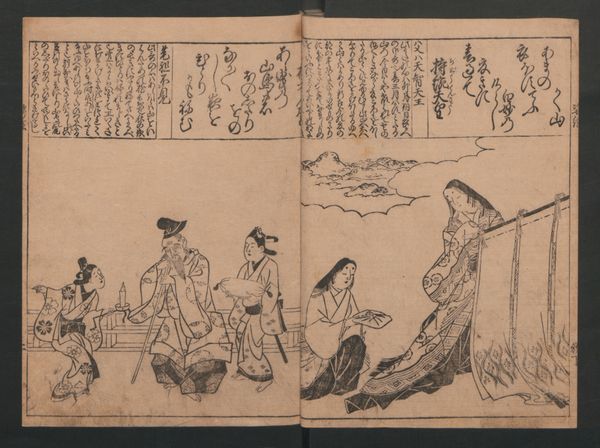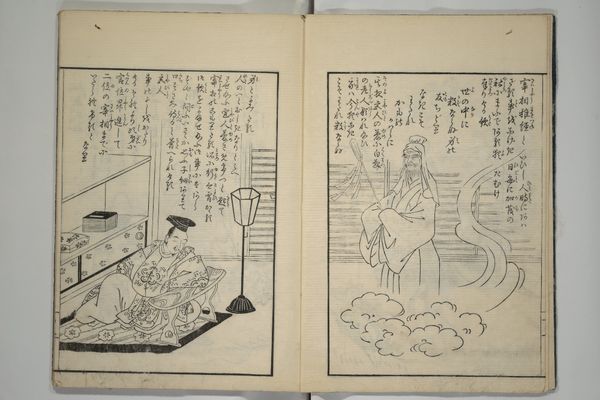![Picture Book of the Eternal Pines (Ehon chiyo no matsu 絵本千代の松) : [volume 3] by Suzuki Harunobu 鈴木春信](/_next/image?url=https%3A%2F%2Fd2w8kbdekdi1gv.cloudfront.net%2FeyJidWNrZXQiOiAiYXJ0ZXJhLWltYWdlcy1idWNrZXQiLCAia2V5IjogImFydHdvcmtzL2VhOTYyZThjLWQyN2EtNDE2OC04YWRlLTcyOGRiMGI2MDVjNS9lYTk2MmU4Yy1kMjdhLTQxNjgtOGFkZS03MjhkYjBiNjA1YzVfZnVsbC5qcGciLCAiZWRpdHMiOiB7InJlc2l6ZSI6IHsid2lkdGgiOiAxOTIwLCAiaGVpZ2h0IjogMTkyMCwgImZpdCI6ICJpbnNpZGUifX19&w=3840&q=75)
Picture Book of the Eternal Pines (Ehon chiyo no matsu 絵本千代の松) : [volume 3] 1761 - 1771
0:00
0:00
drawing, print, paper, ink
#
portrait
#
drawing
#
narrative-art
# print
#
asian-art
#
landscape
#
ukiyo-e
#
figuration
#
paper
#
ink
#
child
#
line
#
genre-painting
#
history-painting
Dimensions: each: 12 3/16 × 8 1/4 in. (31 × 21 cm)
Copyright: Public Domain
Curator: So, we're looking at a page from Suzuki Harunobu’s “Picture Book of the Eternal Pines,” created sometime between 1761 and 1771. This is actually a woodblock print, using ink on paper, and it’s currently housed here at the Met. Editor: Well, right away I see quiet domesticity, almost a lullaby on paper. Just the simple monochrome lines somehow suggest coziness and calm. What a charming scene! Curator: Indeed! This image exemplifies Ukiyo-e, or "pictures of the floating world." It’s interesting because it offers a glimpse into the everyday life and leisure of the Edo period. What seems "everyday," however, was actually being shaped by larger cultural shifts, like the rising merchant class and their patronage of the arts. Editor: “Floating world”--isn't that a wonderful idea? Like little paper boats bobbing on the currents of time. Looking closely, the pine sprig could also suggest celebration, possibly New Year. Curator: Exactly! The pine is a symbol of longevity and resilience. The “Eternal Pines” hints at prosperity and a continued, thriving dynasty. But more than that, I find it telling that these books were commodities. This art was accessible; it could circulate among different audiences. Editor: And here's a fascinating thought: Even without vibrant colors, there's an undeniable warmth. You notice the patterns in the kimonos, all the subtle textures. Perhaps it's a way of finding beauty in the ephemeral, isn't it? A reminder to slow down. Curator: Very insightful. Furthermore, this book format itself reveals much about artistic dissemination in 18th century Japan. Printed books expanded access to art and visual narratives, challenging the traditional elite's monopoly. Editor: It’s a delicate balance, the weight of history and then just…lightness, isn't it? All condensed into this seemingly simple print. I think what endures for me is how such simplicity can spark so many different thoughts and associations. Curator: Precisely! It illustrates art's enduring ability to bridge divides –social classes, cultural contexts, and even temporal gaps. Its accessibility in terms of format contributes significantly to the art’s sustained appreciation across generations.
Comments
No comments
Be the first to comment and join the conversation on the ultimate creative platform.
